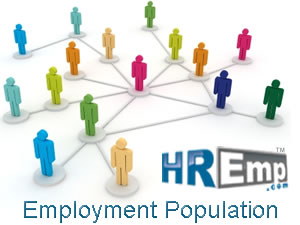 Of the many HR challenges, human resource managers have their work cut out for them in 2014 when it comes to employment legal issues. With globalization of the workforce, new health care laws and the continued usage of mobile technology, businesses have a variety of legal categories of which to keep abreast. Many of these employment legal issues have traditionally been handled by HR departments, but recent developments are requiring more decisions from owners and top management. Here are the HR legal updates and trends to watch out for.
Of the many HR challenges, human resource managers have their work cut out for them in 2014 when it comes to employment legal issues. With globalization of the workforce, new health care laws and the continued usage of mobile technology, businesses have a variety of legal categories of which to keep abreast. Many of these employment legal issues have traditionally been handled by HR departments, but recent developments are requiring more decisions from owners and top management. Here are the HR legal updates and trends to watch out for.
HR Legal Updates
The following are some of the major HR legal updates that are important for employers to know:
- Healthcare reform: Healthcare coverage changes began in 2013, and will continue to affect business finances and decision-making in 2014. Business will need to comply with these reforms, including awareness of their status for the reporting for the Employer Shared Responsibility provision (delayed until 2015). Employers that offer a health Flexible Spending Account (FSA) must also offer group health insurance coverage. Small business tax credit for companies that offer health insurance also changes in 2014.
- Defense of Marriage Act (DOMA): The Supreme Court’s decision to expand the federal definition of marriage to include spouses of the same gender will have an effect on federal laws including the Family Medical Leave Act (FMLA). Families are now eligible to pay benefits to same-gender spouses on a pretax basis for federal taxes. Businesses may also be able to collect a refund of federal unemployment tax paid to same-gender spouses who are legally married.
- Privacy: Implementation of measures on the state level to enhance security and privacy laws is continuing in 2014. Businesses need to be protected against cyber fraud and theft.
Employment Legal Issues Up for Debate
These HR issues are currently being debated on Capitol Hill in 2014 and may, or may not, cause changes in legal regulations this year.
- Immigration: Immigration reform is being debated in Washington with possible legislation that will affect businesses such as the Employment Eligibility Verification Form I-9.
- IRS Employment Legal Issues: Arguments began in January to determine if severance pay is taxable. Also, the IRS is examining taxation of tips and service charges.
- Retirement: Lawmakers are looking at changes that affect retirement plans that businesses offer employees. One of them is an amendment to retirement statements.
- Employment Legal Issues and Regulations: Other regulations are being examined this year including a worker’s right to organize, enforcement of employees that are misclassified as independent contractors, minimum wage and overtime laws provided by the Fair Labor Standards Act and a possible increase to the federal minimum wage.
- Banking: Banks are tightening up their requirements due to new regulations; therefore expect some effects on businesses including payroll card programs. Businesses that offer this option to employees need to make sure that their card providers are well versed in the relevant federal and state regulations.
Disclaimer Statement: All information presented is for information purposes only and is not intended to provide professional or legal advice regarding actions to take in any situation.
Sources:
http://www.shrm.org/hrdisciplines/global/articles/pages/shrm-global-hr-trends-2014.aspx
http://smallbusiness.foxbusiness.com/legal-hr/2013/12/27/regulatory-issues-that-will-affect-small-business-in-2014/


 Organizations across diverse industries have only just begun to tap the potential of big data. They are beginning to understand why and how it is a disruptive technology. Big data analytics (or advanced analytics), is empowering these organizations to make more informed business decisions. One area where companies are starting to realize the potential impact of advanced analytics is in human resources (HR).
Organizations across diverse industries have only just begun to tap the potential of big data. They are beginning to understand why and how it is a disruptive technology. Big data analytics (or advanced analytics), is empowering these organizations to make more informed business decisions. One area where companies are starting to realize the potential impact of advanced analytics is in human resources (HR). One of the more laborious responsibilities of any human resources manager, or small business owner, involves overseeing the hiring process of candidates for job openings. By its very nature, the hiring process is a very time-consuming exercise. Moreover, it gets further complicated by the fact that many candidates lie on their resumes. A recent survey conducted by Harris Poll, on behalf of CareerBuilder, found that
One of the more laborious responsibilities of any human resources manager, or small business owner, involves overseeing the hiring process of candidates for job openings. By its very nature, the hiring process is a very time-consuming exercise. Moreover, it gets further complicated by the fact that many candidates lie on their resumes. A recent survey conducted by Harris Poll, on behalf of CareerBuilder, found that 
 A
A